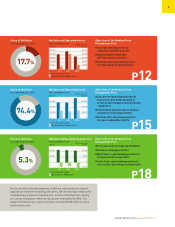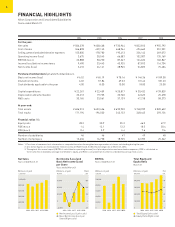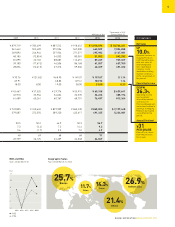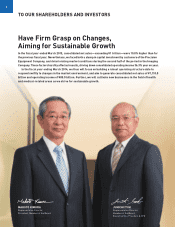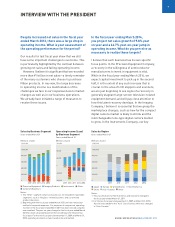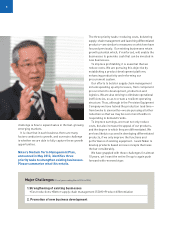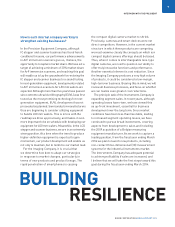Nikon 2013 Annual Report Download - page 15
Download and view the complete annual report
Please find page 15 of the 2013 Nikon annual report below. You can navigate through the pages in the report by either clicking on the pages listed below, or by using the keyword search tool below to find specific information within the annual report.
we received positive feedback on the system’s
performance at the Kumagaya Plant. We thus
believe that we have a foothold that will enable
us to develop an offensive business strategy.
Meanwhile, in the area of LCD scanners, there
was a rise in sales of 5th- and 6th-generation
systems for small to medium-sized high-definition
panels. The 38 units sold, up from the 32 in the
fiscal year ended March 2012, were an indication
of the continued firm market for smartphones and
tablet computers. By contrast, Nikon sold just one
system in the 7th generation and beyond, compared
with 17 units sold in the fiscal year ended March
2012, since prices for large-screen televisions
remained low. Be that as it may, Nikon managed to
maintain its 80% market share for LCD scanners.
Next-generation ArF Immersion Scanners for
450 mm Wafers Give Nikon an Advantage over
the Competition
We expect the harsh market conditions for IC
steppers and scanners to continue through the
first half of 2013 and, for the market as a whole,
full-year unit sales to decline to around
200 units from 222 units in 2012. However,
we foresee a resumption in capital investments
among semiconductor manufacturers from the
second half of 2013, and so expect a recovery in
sales to around 230 units by the fiscal year ending
March 2016. For the fiscal year ending March 2014,
we expect Nikon’s sales to increase from 40 units
(including refurbished equipment) in the fiscal year
ended March 2013, as a result of greater product
competitiveness and other factors.
Product competitiveness is key to boosting sales
of IC steppers and scanners, for which reason
it is important to focus on three aspects of their
performance: higher resolution, overlay accuracy
and throughput. Nikon’s leading ArF immersion
scanners already surpass competing systems in
several aspects of their performance. By exploiting
this advantage, we hope to increase to 30% our
share of the market for ArF immersion scanners by
the fiscal year ending March 2016.
This 30% goal is a step on our way to the position
of industry leader. Beyond that we are preparing
for a transition to next-generation systems for 450
mm wafers. At the start of calendar year 2013, Nikon
received its first formal order for a prototype ArF
immersion scanner for 450 mm wafers. Further,
in July 2013 we announced the receipt of an order
for this prototype scanner from the U.S. research
13
NIKON CORPORATION A N N U A L R E P O R T 2 0 13
80
60
40
20
0
2011 2012 2013
57
84 80
60
40
20
0
57
86
2011 2012 2013
40 43
(Units)
100
(Units)
100
IC Steppers and Scanners,
Unit Sales by Technology
Years ended March 31
LCD Steppers and Scanners,
Unit Sales by Generation
Years ended March 31
■ 7G and above ■ 5G/6G ■ 4G
■ ArF
immersion
■ ArF ■ KrF
■ i-line
Note:
Unit sales figures for the fiscal year
ended March 2011 is for new
products only. Figures from the
fiscal year ended March 2012 include
refurbished equipment.
18
28
35
3
28
1
12
16
13
3
16
8
37
32
17
4
38
1
16
11
30
ArF Immersion Scanner
NSR-S622D


